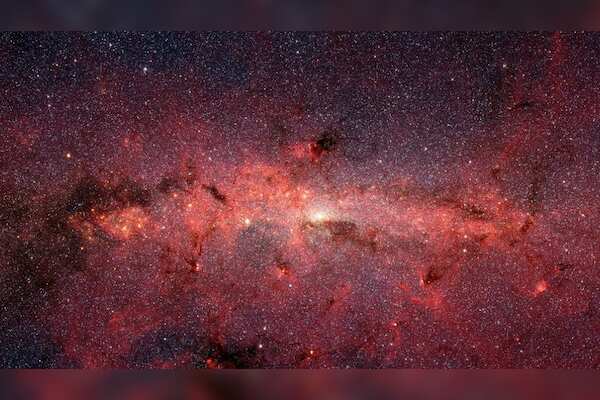Just as our solar system in the Milky Way has eight planets orbiting around the Sun, another planetary system located a bit farther away consists of six worlds revolving around their star in perfect harmony. This unique system bears a resemblance to our own solar system and is situated within the Milky Way galaxy itself. The phenomenon observed in both these systems is known as a chain of resonance.
This term refers to the synchronization of orbits among multiple celestial bodies, allowing them to move in harmony with one another. In the case of this particular planetary system, each of the six planets demonstrates a chain of resonance as they orbit around the bright star known as HD 110067. Astrophysicist Rafael Luque from the University of Chicago explains, "We think only about one percent of all systems stay in resonance. It shows us the pristine configuration of a planetary system that has survived untouched." This system provides valuable insights into the nature of planetary systems and their evolution over time. Orbital resonances, such as the one observed in the HD 110067 system, are not uncommon in the universe. They occur when the gravitational forces between two or more orbiting bodies cause their orbital periods to align in a specific way. The unique alignment of the six exoplanets around the star HD 110067 makes it only the third known system to exhibit such a chain of resonance. Scientists believe that the star around which these exoplanets orbit formed over a billion years ago, giving it a long history of stability and evolution. The configuration of planetary orbits within the HD 110067 system suggests that no major disruptive events have occurred over its billion-year existence, making it a rare and valuable subject for study. The researchers involved in studying this planetary system have published their findings in the prestigious journal Nature. They note, "The current delicate configuration of the planetary orbits in HD 110067 rules out any violent event over the billion-year history of the system, making it a rare 'fossil' to study migration mechanisms and the properties of its protoplanetary disk in a pristine environment. " Furthermore, the brightness of the host star and the presence of extended atmospheres in most of its planets make HD 110067 an ideal candidate for observation using instruments like the James Webb Space Telescope. This system offers a unique opportunity to study sub-Neptune planets and gain insights into the formation and survival of resonant chains in planetary systems. In conclusion, the discovery of the planetary system revolving around HD 110067 provides a glimpse into the diverse range of planetary configurations that exist in our galaxy. By studying systems like these, scientists can unravel the mysteries of planetary formation, evolution, and stability in the universe. The intricate dance of planets around their host star serves as a testament to the beauty and complexity of our cosmic neighborhood within the Milky Way.A Harmony of Six: Exploring the Resonant Planetary System of HD 110067 in the Milky Way Galaxy
 9 months ago
22716
9 months ago
22716
Related
Witnessing the Lunar Show: A guide to watching August's supe...
1 month ago
2232
Insights from James Webb Space Telescope Resolve Debate on U...
1 month ago
1755
Commercialization of Women's Health: The Impact of Feminist ...
7 months ago
19811
Trending in United States of America
Popular
Nokia Reaches 5G Patent Agreement with Vivo After Lengthy Le...
7 months ago
26048
Apple's Upcoming Tablet Lineup: iPad Air to Introduce Two Si...
9 months ago
25976
Xiaomi's First Electric Car, the SU7 Sedan, Enters the EV Ma...
8 months ago
25364
The European Parliament's Bold Move to Combat Smartphone Add...
9 months ago
25312
Unveiling ChatGPT's New 'Memory' Feature Revolutionizing Use...
7 months ago
25212
© OriginSources 2024. All rights are reserved








 English (US)
English (US)